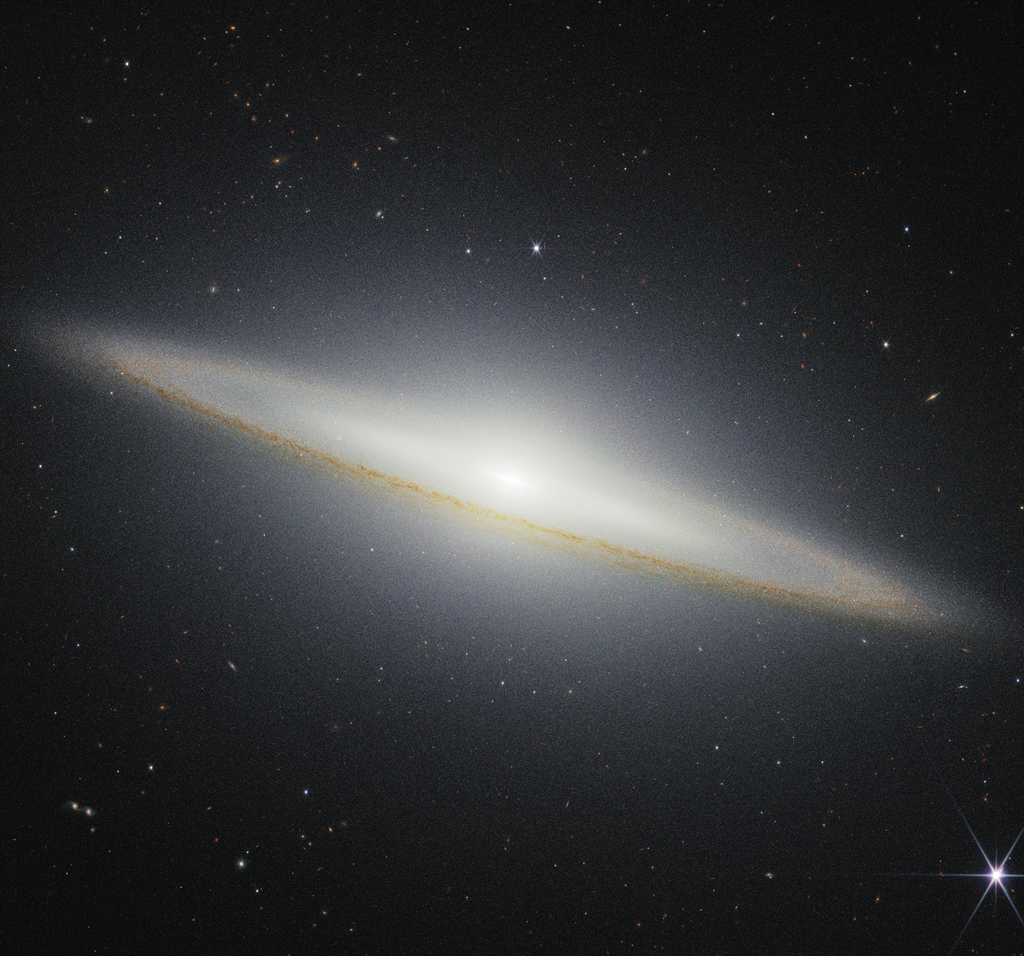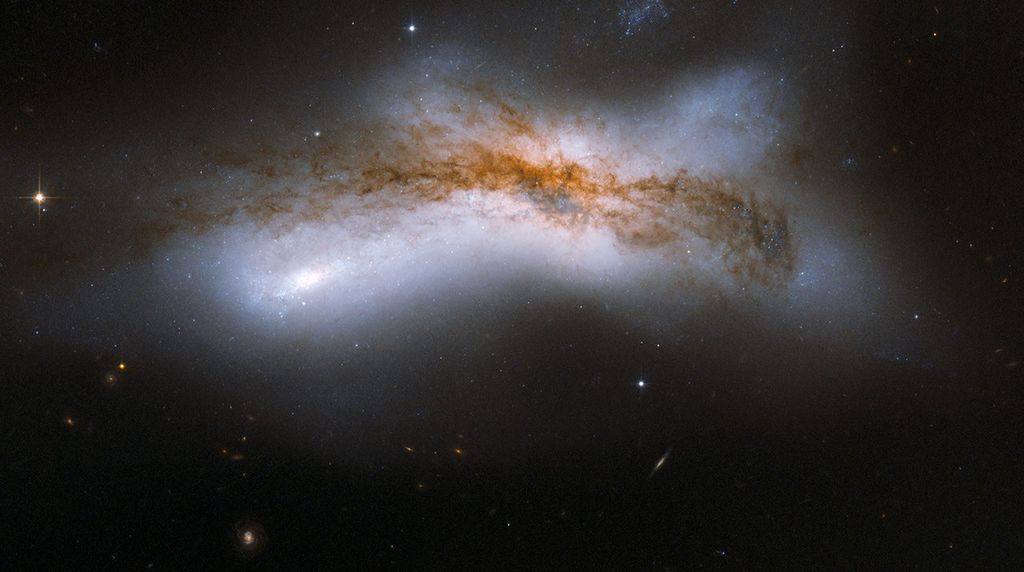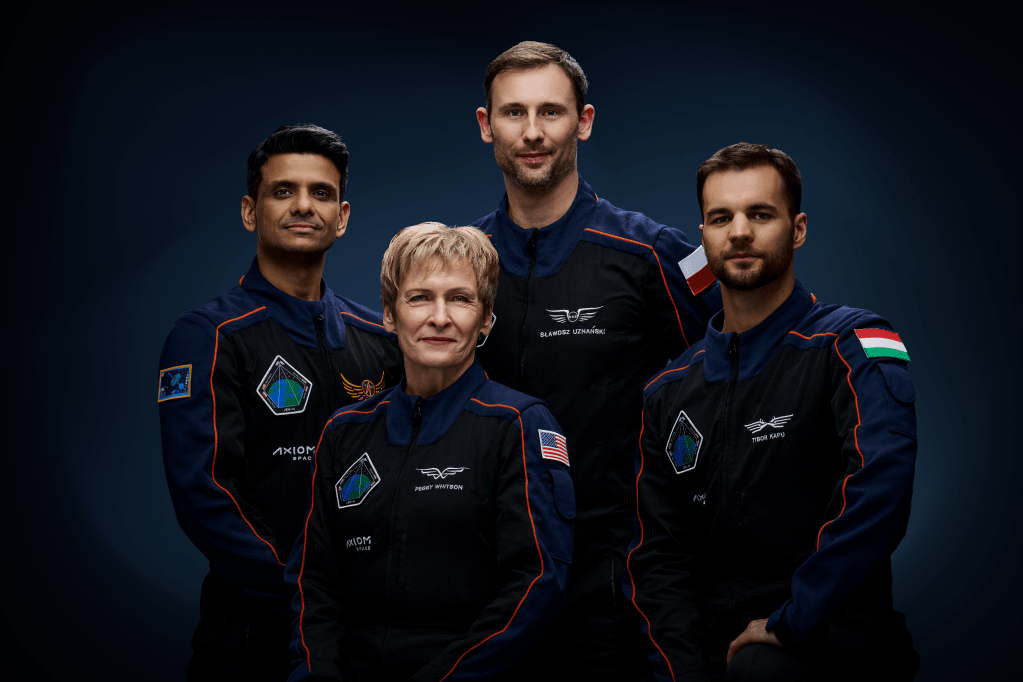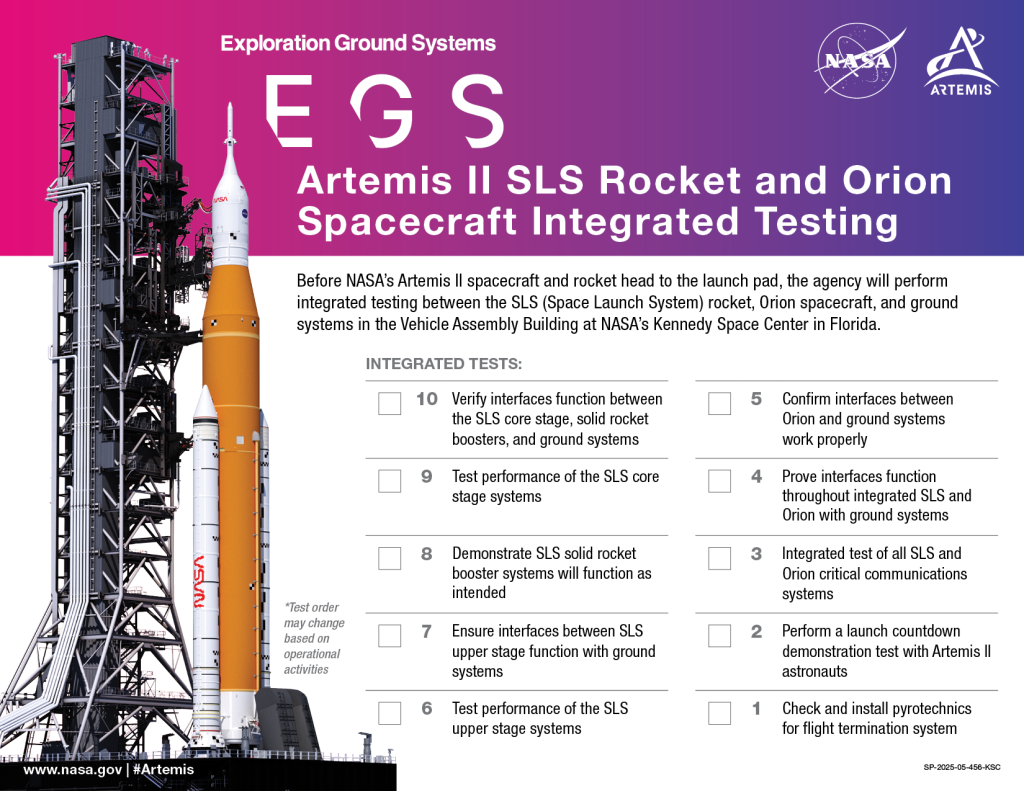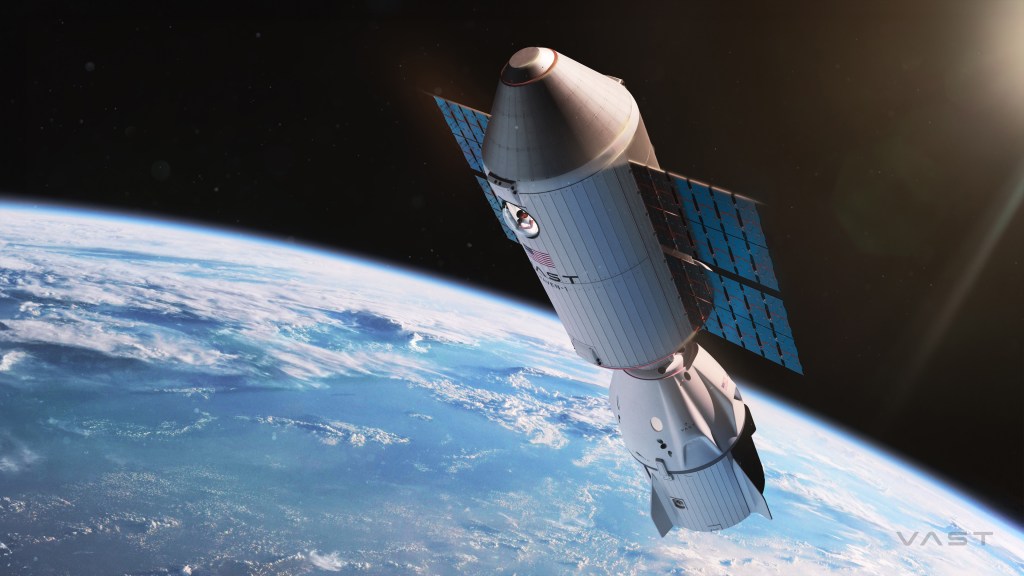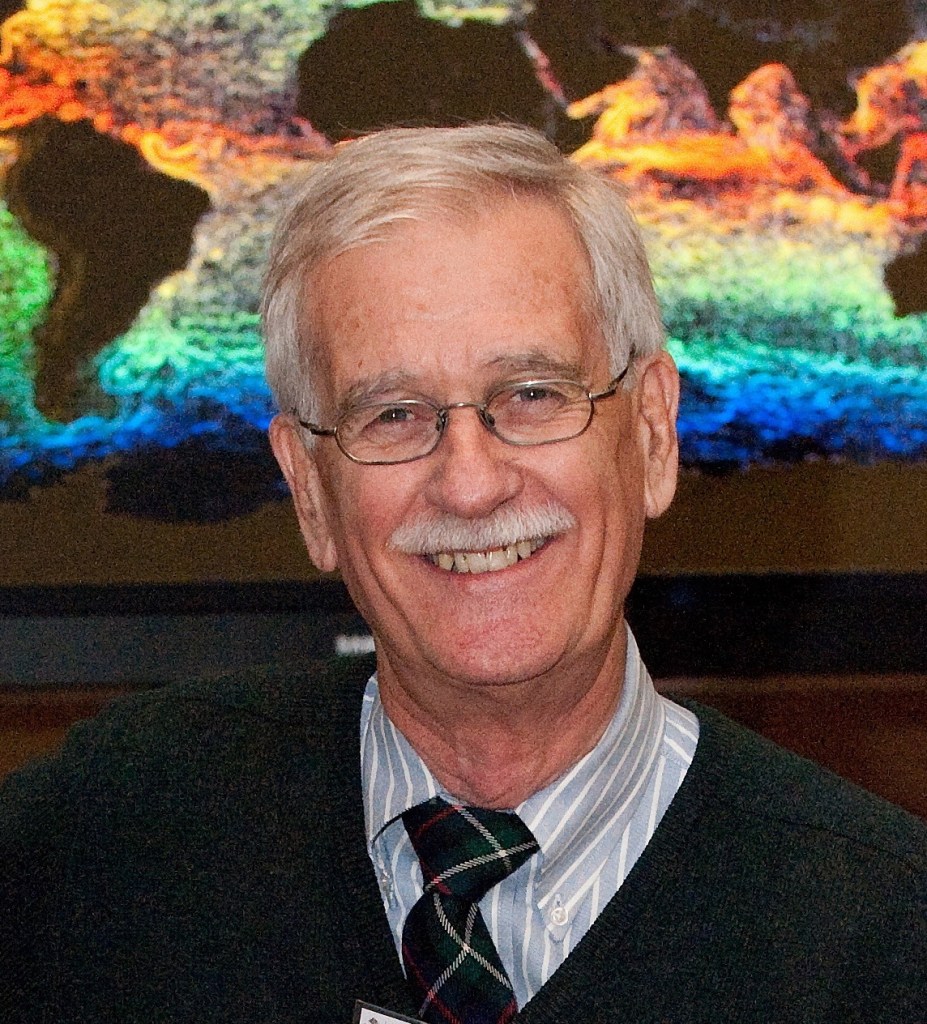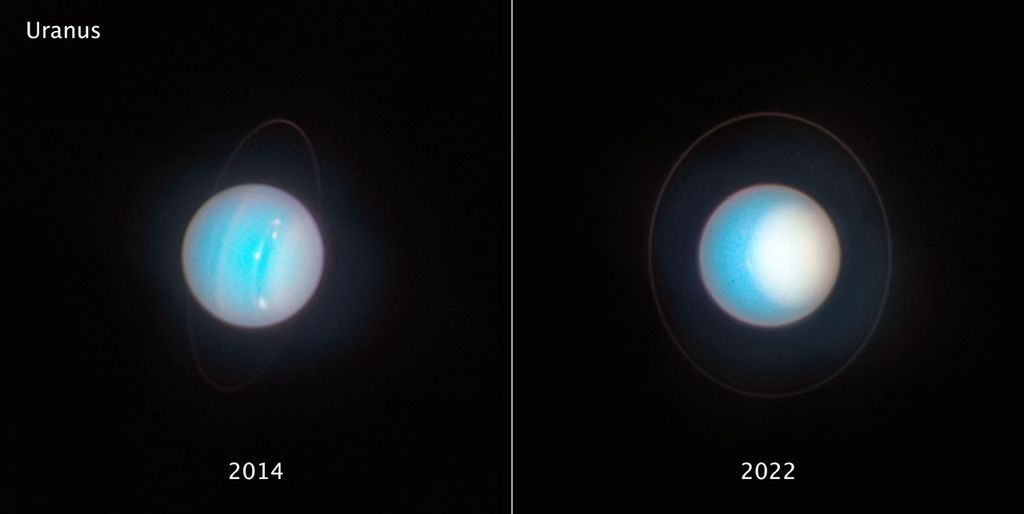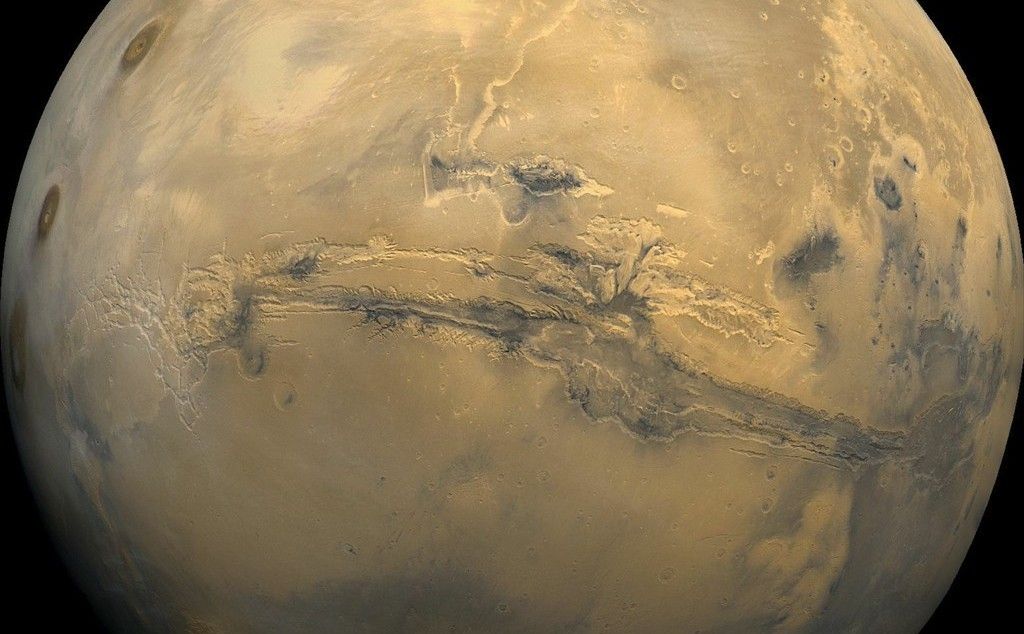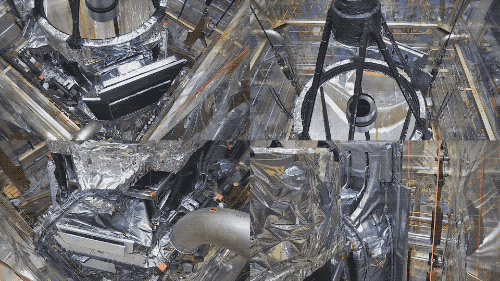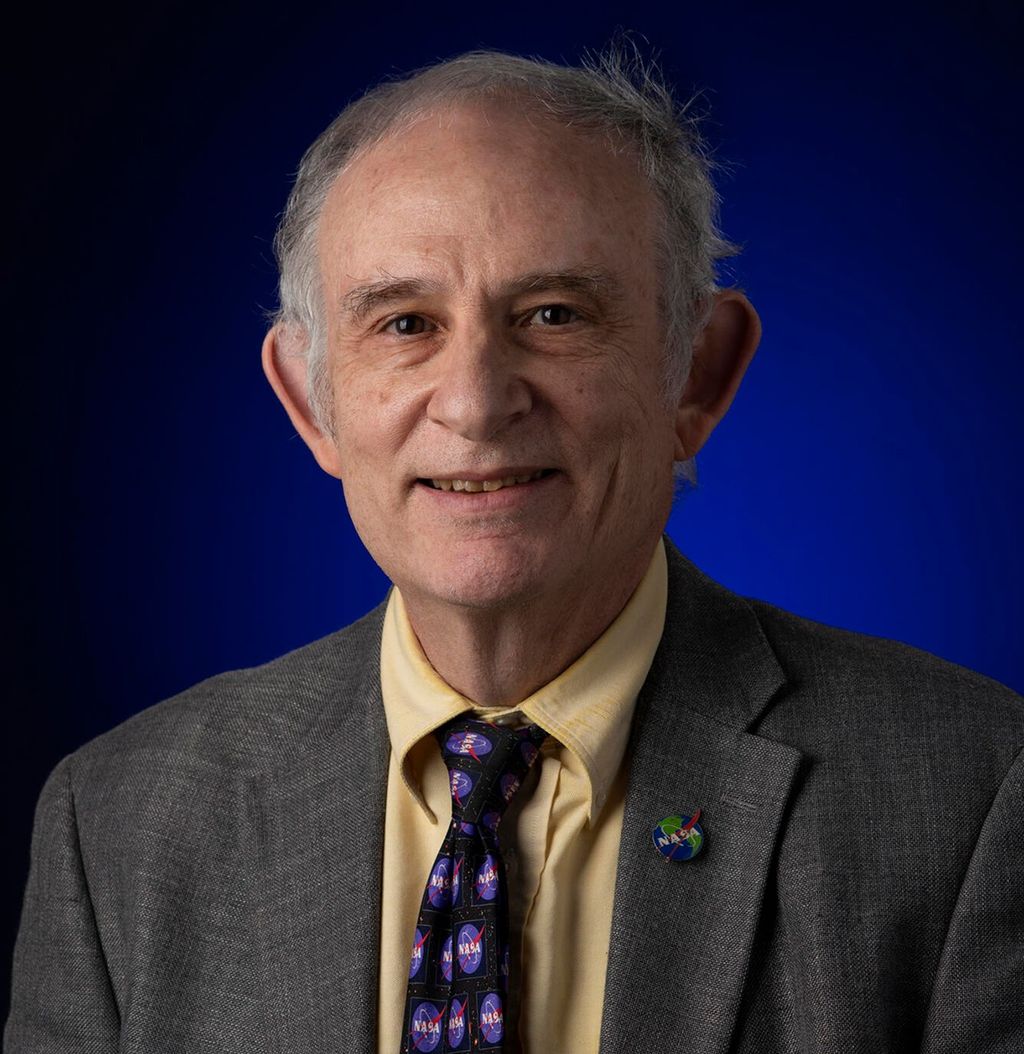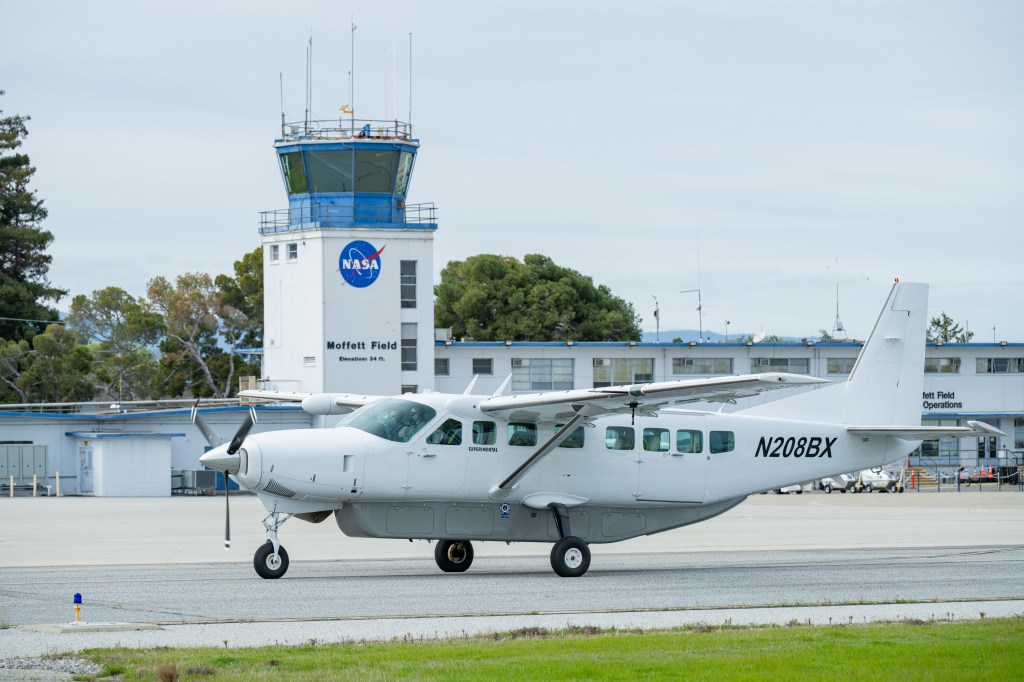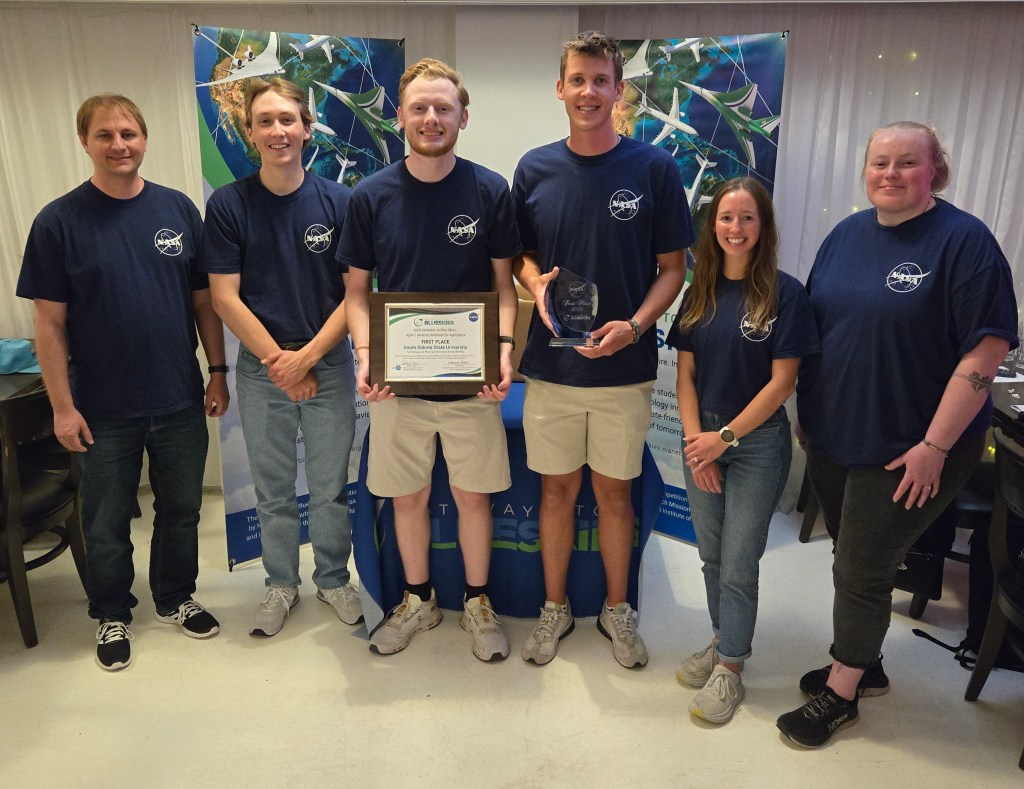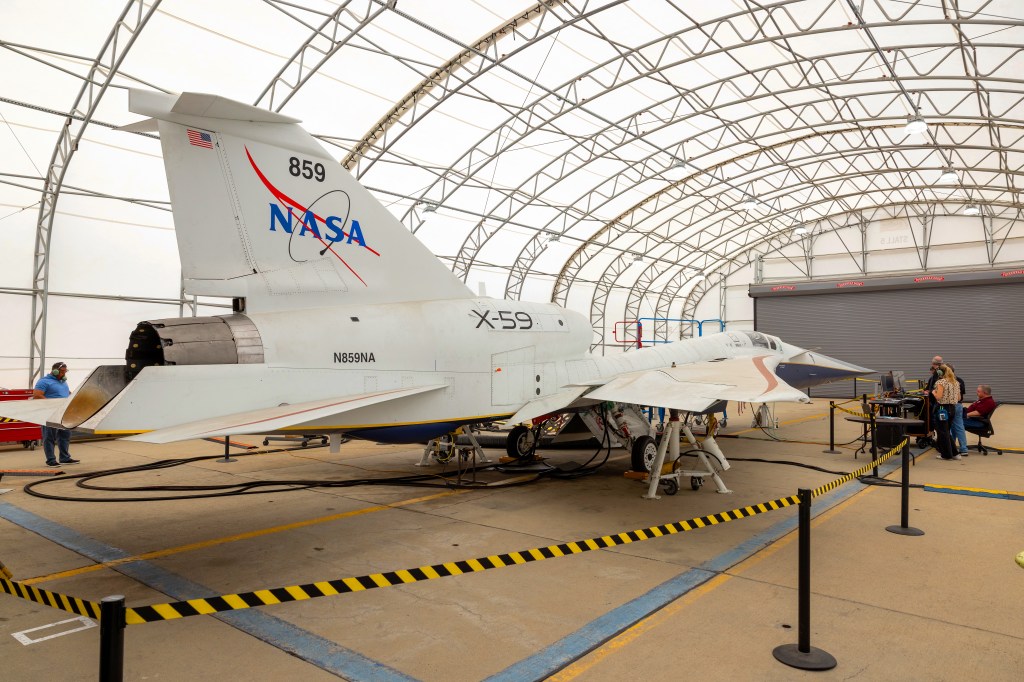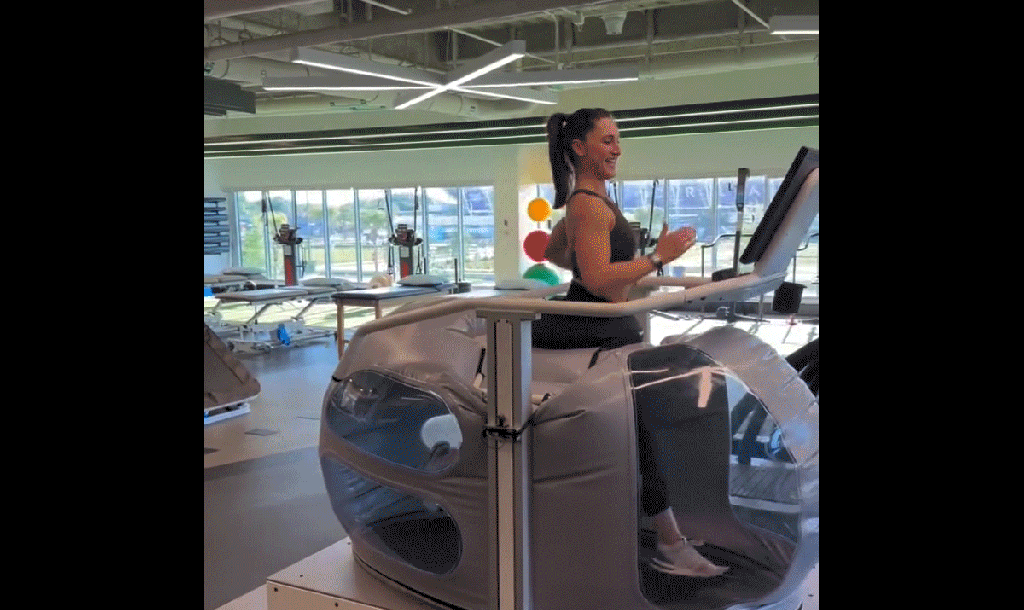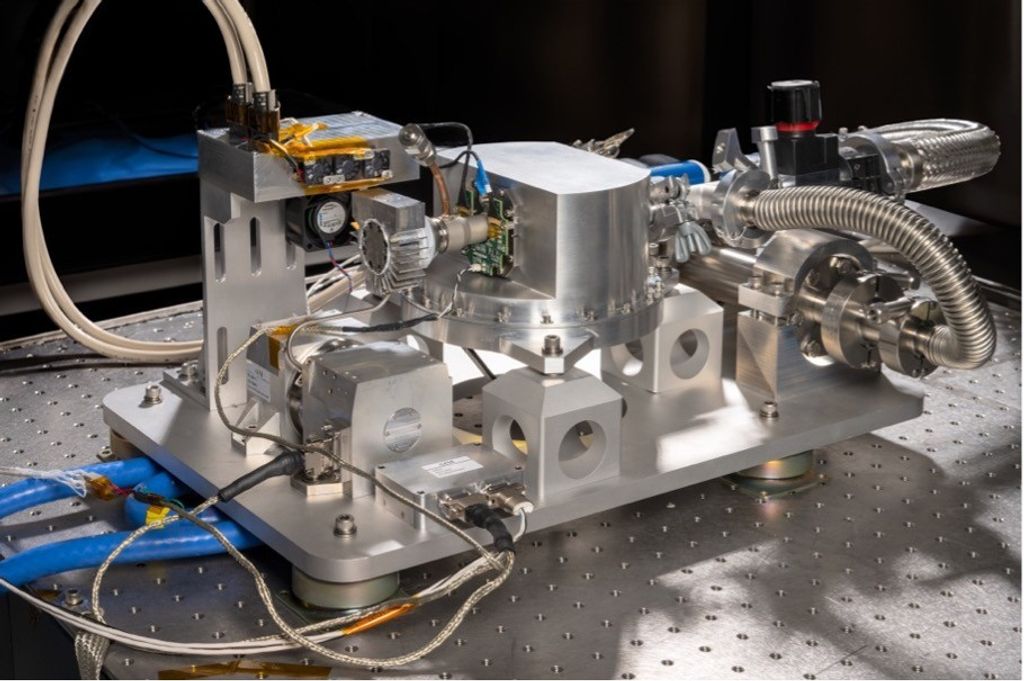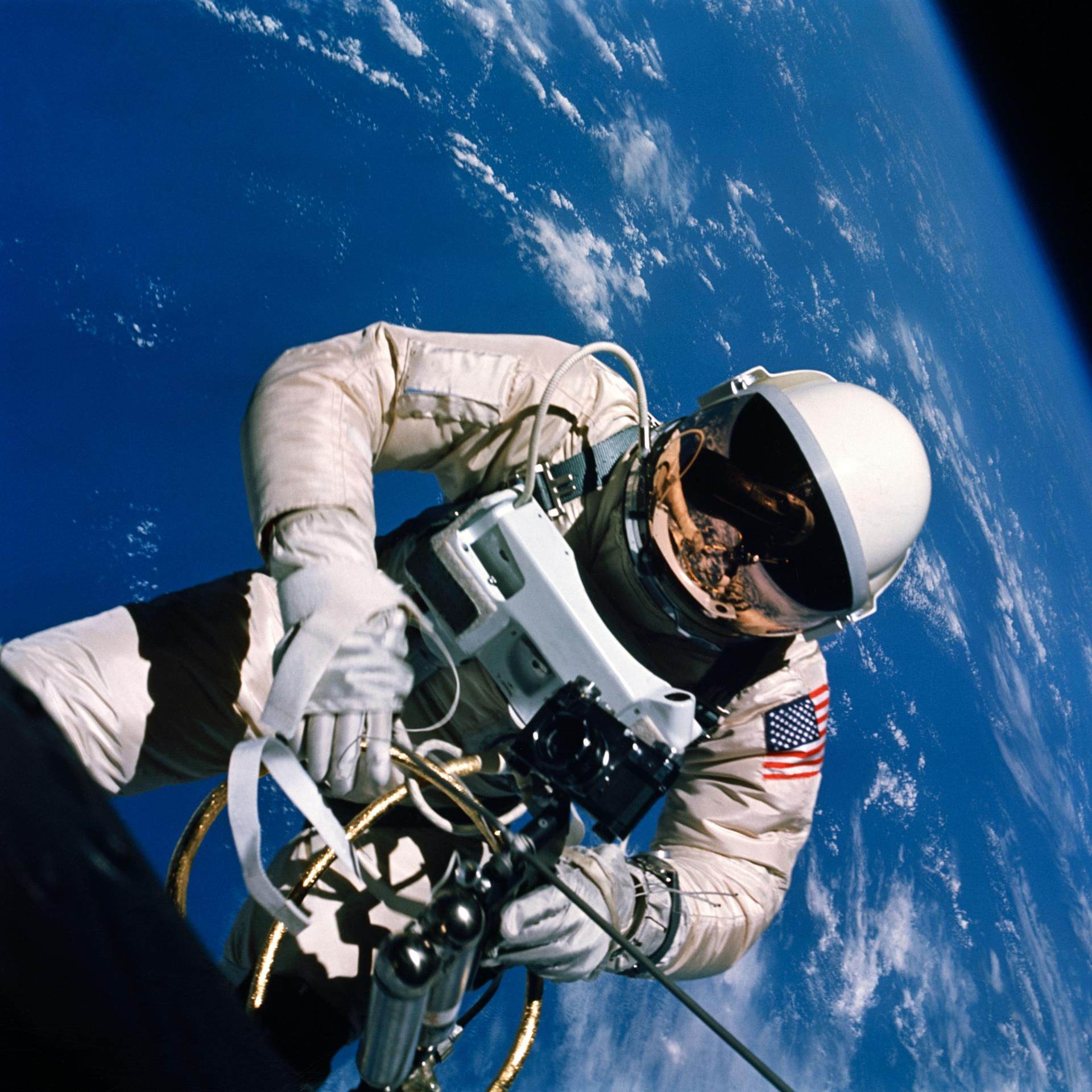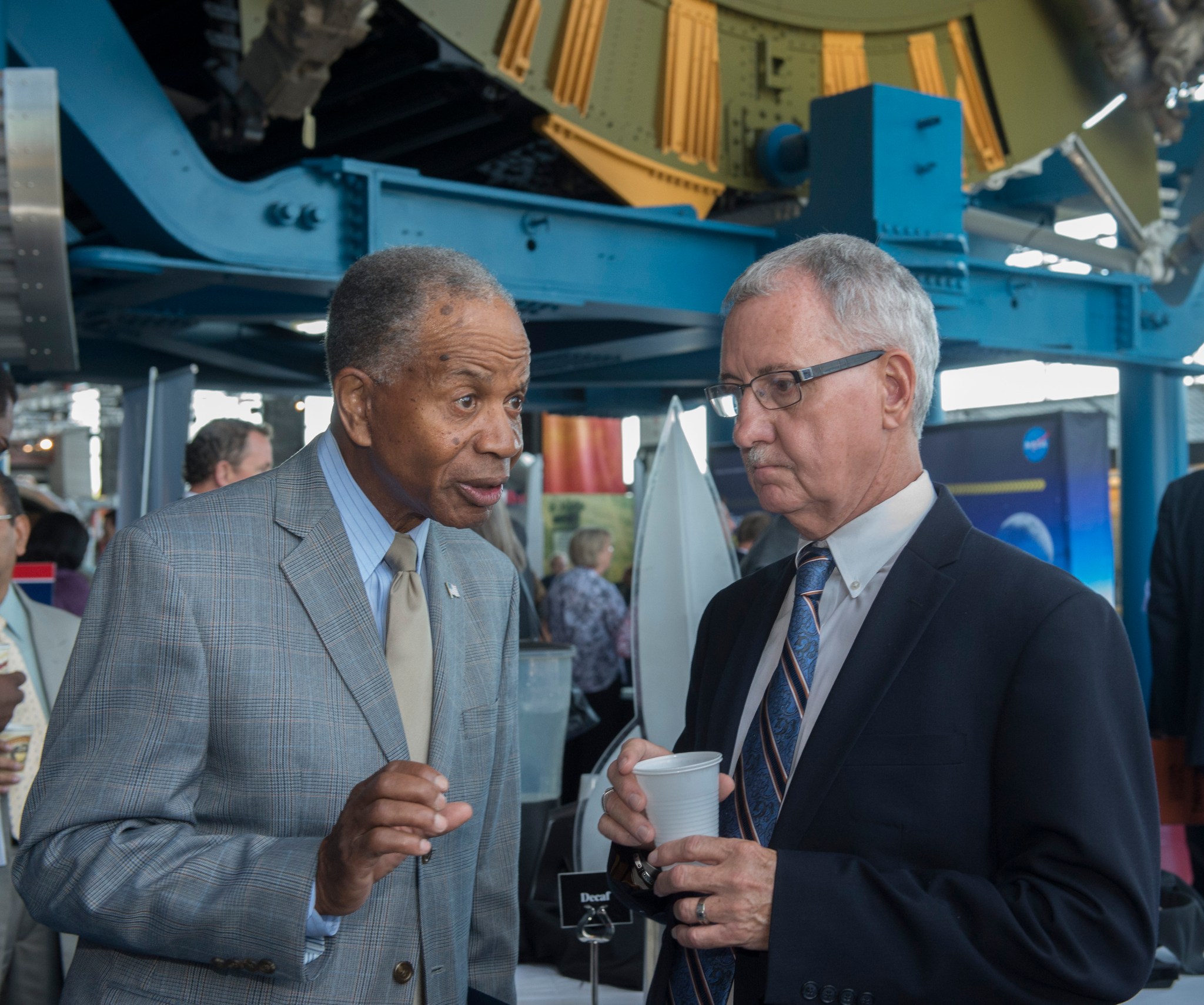In This Week’s Star
- Major Construction Complete on First of Two New Marshall Test Stands for NASA’s Space Launch System
- Marshall Center Director Todd May Addresses Workforce During All-Hands Meeting Sept. 27
- Awards Presented to NASA Contractors, Support Teams During 2016 Marshall Small Business Alliance Meeting
- African-American Voices Celebrate Museum Opening, Share Inspiration
- Marshall-Developed Software Improves Space Weather Forecasts
- Faster Than a Flying Space Station: 150 Compete in 2016 Racin’ the Station Duathlon
- This Week in NASA History: Second Crewed Skylab Mission Returns to Earth — Sept. 25, 1973
Major Construction Complete on First of Two New Marshall Test Stands for NASA’s Space Launch System
By Kenneth Kesner
Next summer, NASA engineers will push the limits of the fuel tanks that will power the agency’s Space Launch System, the massive rocket that will take humans farther into deep space than we have ever traveled. Workers at NASA’s Marshall Space Flight Center have completed the construction of a critical test stand for the rocket as the agency continues preparing for its journey to Mars.
Engineers at Marshall are now installing special equipment and instrumentation for the structural Test Stand 4697. Future testing will subject the 196,000-gallon cryogenic liquid oxygen tank in the massive core stage of SLS to the tremendous forces it will endure during launch.
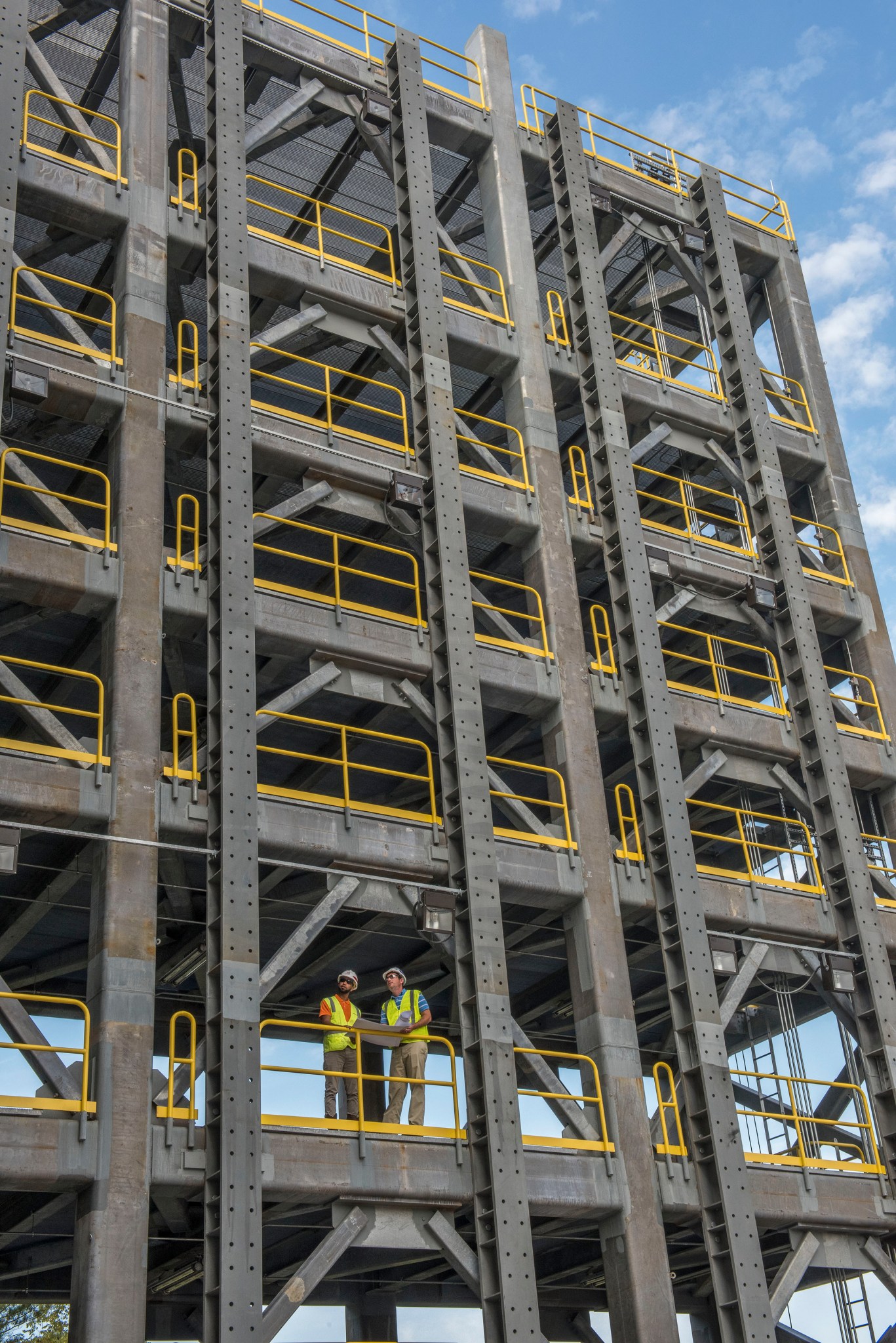
“The forces the tank will experience in the test stand are as close as you can get on Earth to what the tank will experience on its way to space,” said Scott Chartier, primary test engineer over the stand for Marshall’s propulsion systems test branch.
The tank of the world’s most powerful rocket will be tested to the extremes before the rocket begins launching astronauts in NASA’s Orion spacecraft on deep-space missions. To accomplish these SLS tests and future testing, Marshall teams designed and will outfit the stand during the next few months with sophisticated fluid transfer and pressurization systems, hydraulic and electrical control and data systems, fiber optics cables and instrumentation.
Marshall teams will also install equipment and hardware designed specifically for testing the liquid oxygen tank for the SLS core stage, which is being built at NASA’s Michoud Assembly Facility. The test article, which includes the tank, will be produced using exactly the same materials and processes as a flight version, but with additional equipment that will simulate the tank’s connections to the SLS rocket. A barge will carry the test article from Michoud to Marshall in the summer of 2017, Chartier said.
Test Stand 4697 is shaped like an 85-foot-tall “L” with 90-foot-long arms. Three cage-like pedestals will be positioned in a broad circle on the foundation in the crook where the arms meet. When the 28-foot-diameter, 70-foot-tall test article arrives at the stand, it will be carefully lifted and then positioned inside the circle of pedestals. There is only about a foot of clearance on the tank’s sides. The test article will sit atop a “spider” and special ring that will be bolted into the stand’s foundation. A similar spider and ring will be mounted at the test article’s top. It will take up to two months to install all the final sensors, gauges, systems, cameras and test equipment.
When testing is underway in late summer 2017, hydraulic cylinders and “load lines” attached to the spiders’ arms, the pedestals and the steel of the stand will push, pull and apply varying combinations of pressure to the tank, which will be filled with varying amounts and temperatures of fluid. Each test scenario and combination simulates a different phase of an SLS launch and flight, Chartier said.
And he can hardly wait to begin.
“We haven’t seen this magnitude of testing since we tested the Saturn rockets and the space shuttle,” Chartier said. “These test facilities will serve NASA well as we continue on the journey to Mars. I can’t wait to take my kids to an SLS launch and see the hardware we helped develop on these test stands — sturdy stands even their generation can use as they continue exploring space.”
Phil Hendrix can’t wait either. He’s the Marshall Office of Center Operations facilities construction project manager for both Test Stand 4697 and for Test Stand 4693, where the SLS core stage’s liquid hydrogen tank will be tested. The construction phase for 4693 will end later this year and engineers will begin outfitting its distinctive twin towers with its own range of special equipment.
“It’s been truly unbelievable to be a part of SLS’s journey. It doesn’t seem real to be this fortunate,” he said. “When I get to see SLS launching up through the sky, this dream will truly become reality.”
Kesner, an ASRC Federal/Analytical Services employee, supports the Office of Strategic Analysis & Communications.
Marshall Center Director Todd May Addresses Workforce During All-Hands Meeting Sept. 27
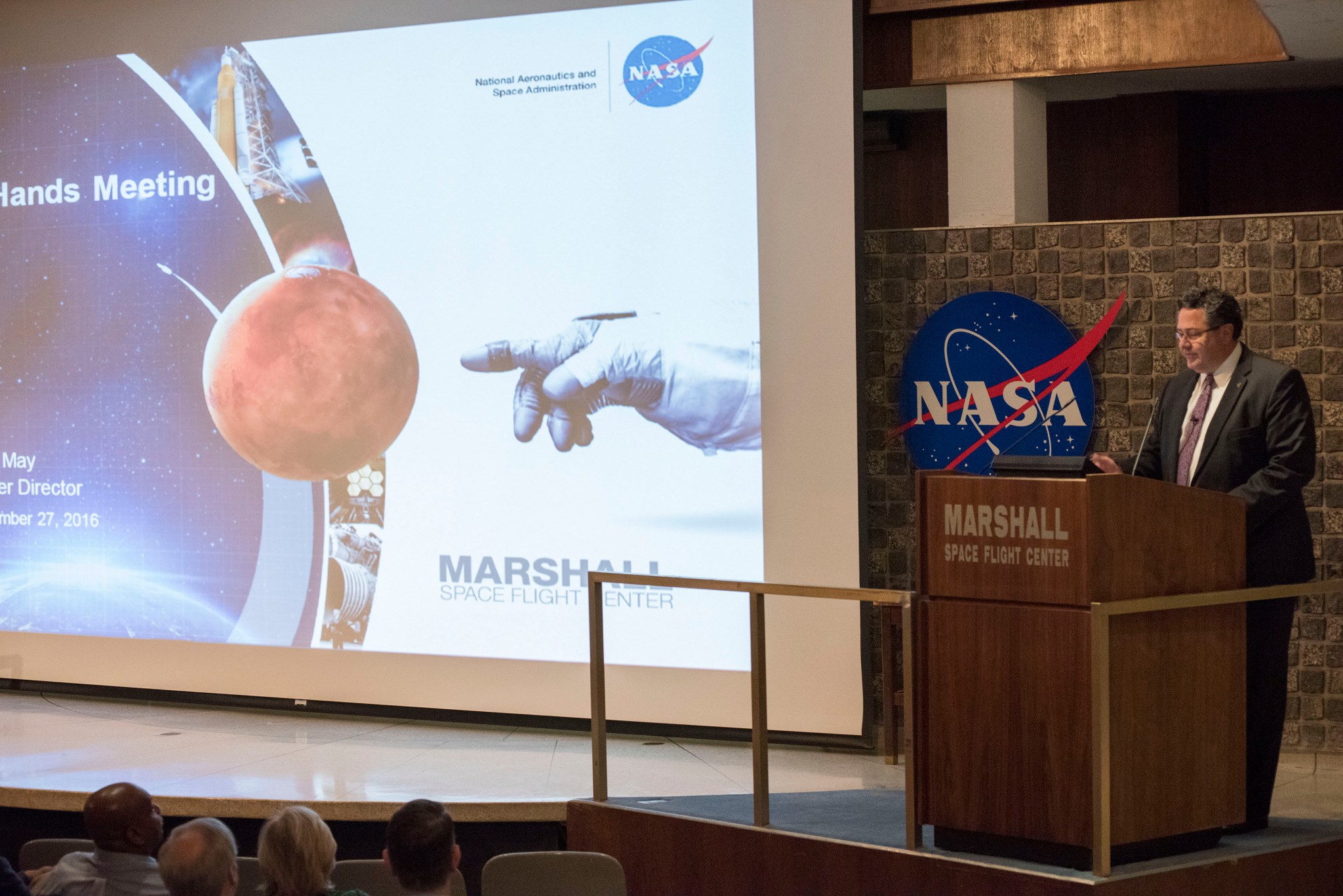
Todd May, director of NASA’s Marshall Space Flight Center, addresses the workforce during an all-hands meeting Sept. 27 in Morris Auditorium. He praised team members for their many successes throughout 2016 by turning milestones into momentum, and delivering on commitments — on budget and on time. May also looked ahead, affirming the center’s pledge to meet the demands of the 21st century by best aligning the structure of Marshall’s internal organizations and directorates. Doing so, he said, will continue a rich tradition of providing the innovative, game-changing work essential for scientific discovery, the future of human spaceflight and eventually, the first human mission to Mars on NASA’s Space Launch System. For video of May’s all-hands remarks, click here. (NASA/MSFC/Fred Deaton)
Awards Presented to NASA Contractors, Support Teams During 2016 Marshall Small Business Alliance Meeting
By Christopher Blair
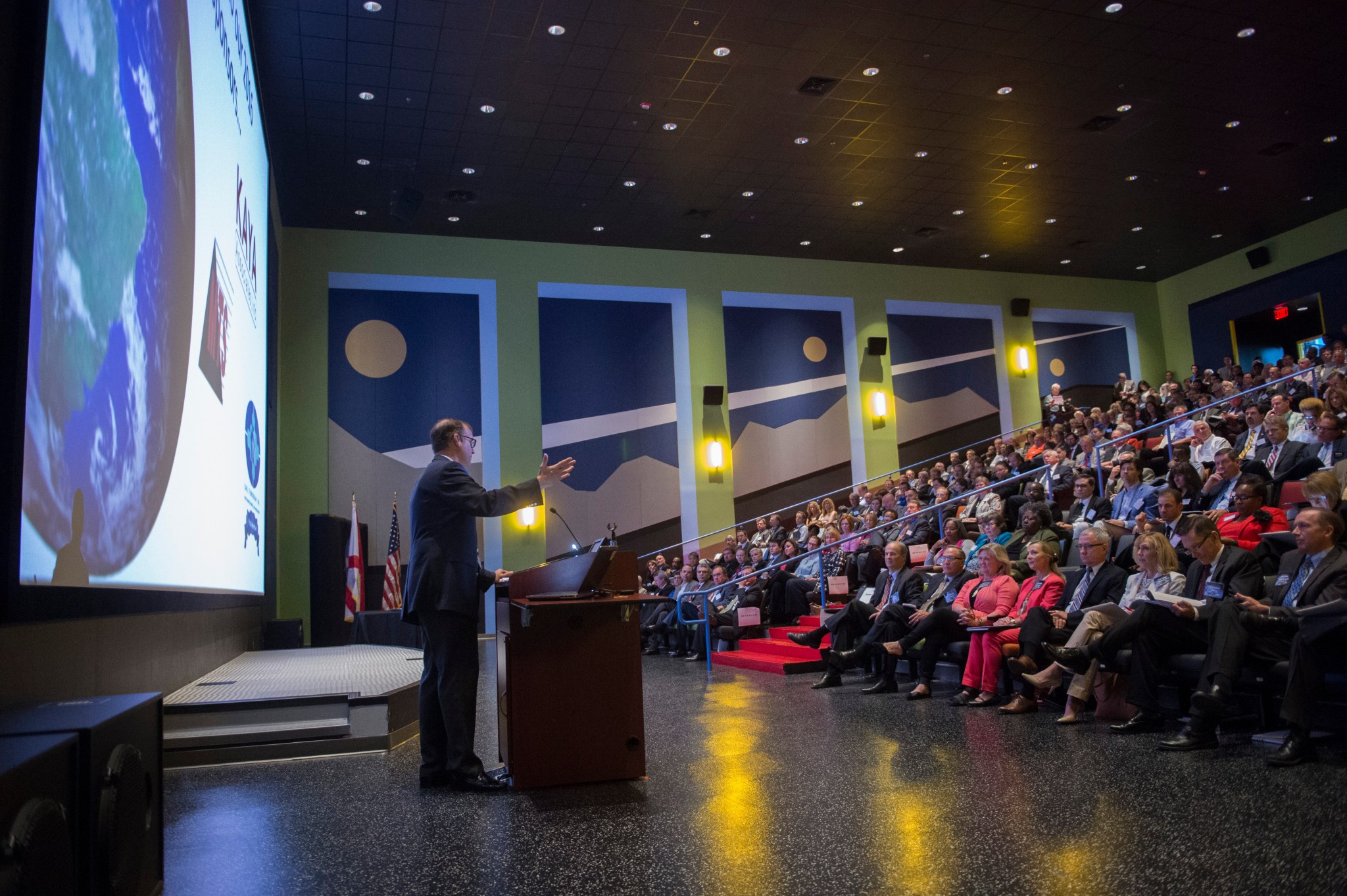
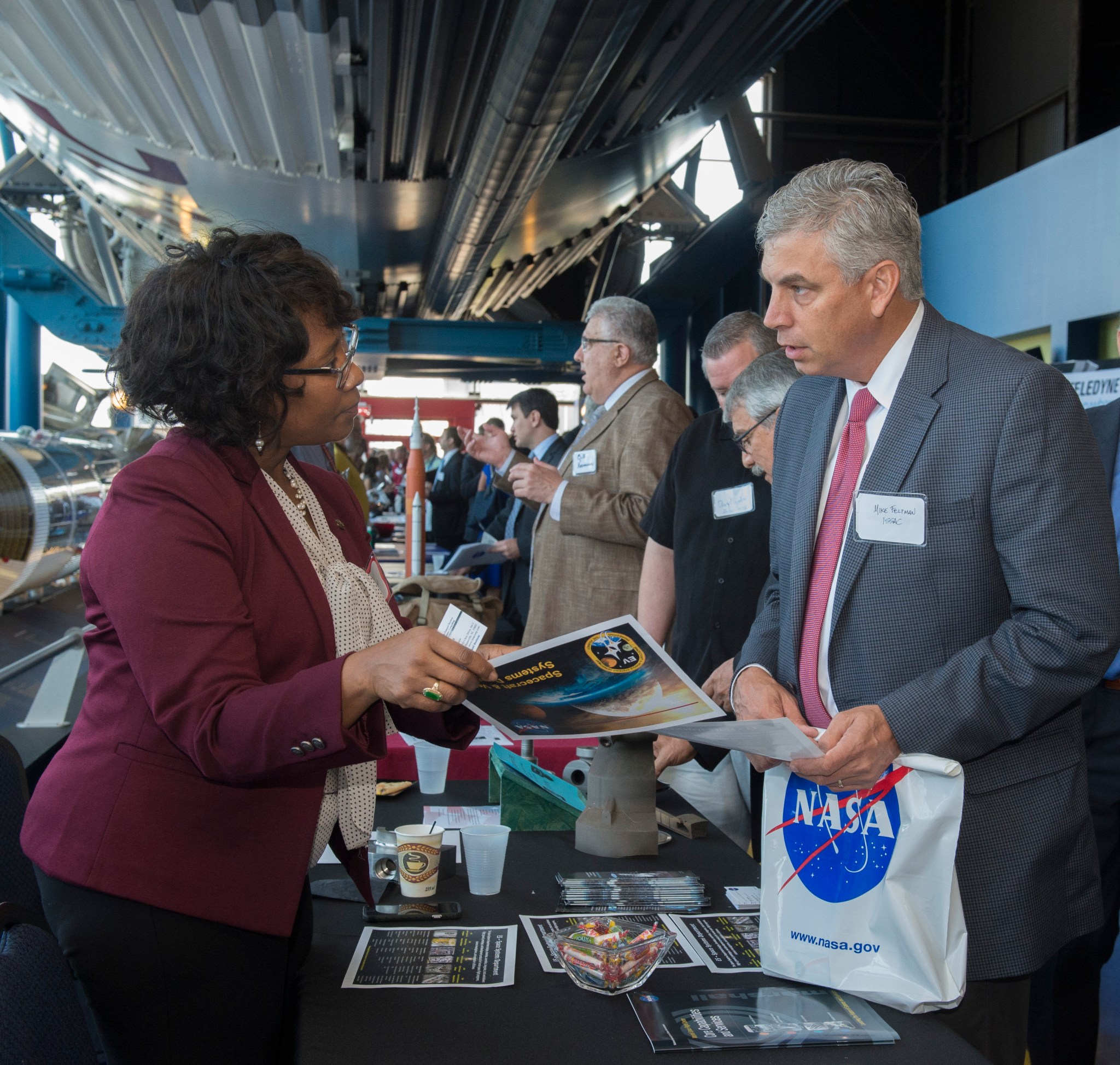
Several large and small business prime contractors, subcontractors and civil-service teams were honored for their success and support of aerospace business with NASA’s Marshall Space Flight Center during the semi-annual Marshall Small Business Alliance meeting Sept. 22.
Hosted by Marshall and held at the U.S. Space & Rocket Center, the awards recognize companies, teams and individuals demonstrating success and sustainable achievement toward meeting NASA’s aerospace missions.
Marshall speakers included Steve Miley, director of the Office of Procurement; Jonathon Pettus, director of the Office of Chief Information Officer; Jim Turner, associate director for technical management of the Engineering Directorate; Johnny Stephenson, director of the Office of Strategic Analysis & Communications; and small business specialist David Brock.
The 2016 award recipients include:
— Large Business Prime Contractor of the Year: Jacobs Engineering Inc. of Huntsville
— Small Business Prime Contractor of the Year: Cepeda Systems & Software Analysis Inc. of Madison, Alabama
— Small Business Subcontractor of the Year: Linc Research Inc. of Huntsville
— Small Business Prime Contractor Excellence Award Recipients:
- Bastion Technologies Inc. of Houston
- Computational Fluid Dynamics Research Corp. of Huntsville
- MTS of Huntsville
— Small Business Subcontractor Excellence Award Recipients:
- AMRO Fabricating Inc. of South El Monte, California
- ePRO LLC. of Houston
- Leda Corp. of Huntington Beach, California
- Quadrus Corp. of Huntsville
- Tec-Masters Inc. of Huntsville
- The University of Nevada-Las Vegas
— Mentor Protégé Program Participation Award:
- Aerojet Rocketdyne of Huntsville; and ICO Rally, of Palo Alto, California
- Jacobs Engineering Inc. and Linc Research, Inc.
- Teledyne Brown Engineering of Huntsville; and The University of Nevada-Las Vegas
- The Boeing Company of Chicago; and AMRO Fabricating Inc.
- URS Federal Services Inc. an AECOM Company of Cleveland; and Seabrook Solutions Inc. of Huntsville
— HUBZone Initiative Team of the Year: James Bailey, David Brock, Kathy Cooper and Jon Pearson
— Program Team of the Year: Historically Black Colleges & Universities / Minority Serving Institutions Initiative — Tracey Randall, Tammy Rowan, Jennifer Simmons and Frank Six
— Technical Person of the Year: Jim Turner
— Small Business Technical Coordinator of the Year: Virginia Lynn Garrison
— Small Business Program Leadership Awards: Chris Jackson and Patty Pierson
The Marshall Center-level award recipients in the categories of Large and Small Business Prime Contractors of the Year, Small Business Subcontractor of the Year, Technical Support Person of the Year and Procurement and Program Support Teams of the Year are eligible candidates for NASA’s agency-level Small Business Industry Awards.
Established in 2007, the Small Business Alliance helps small businesses pursue NASA procurement, subcontracting and mentor protégé opportunities. NASA civil service employees nominate eligible individuals and organizations for awards. A panel of NASA business procurement officials evaluates each nominee’s cost-conscious business practices, innovative processes and adoption of new technologies, as well as their overall contributions to NASA’s mission and the agency’s Small Business Program.
Blair, an ASRC Federal/Analytical Services employee, supports the Office of Strategic Analysis & Communications.
African-American Voices Celebrate Museum Opening, Share Inspiration
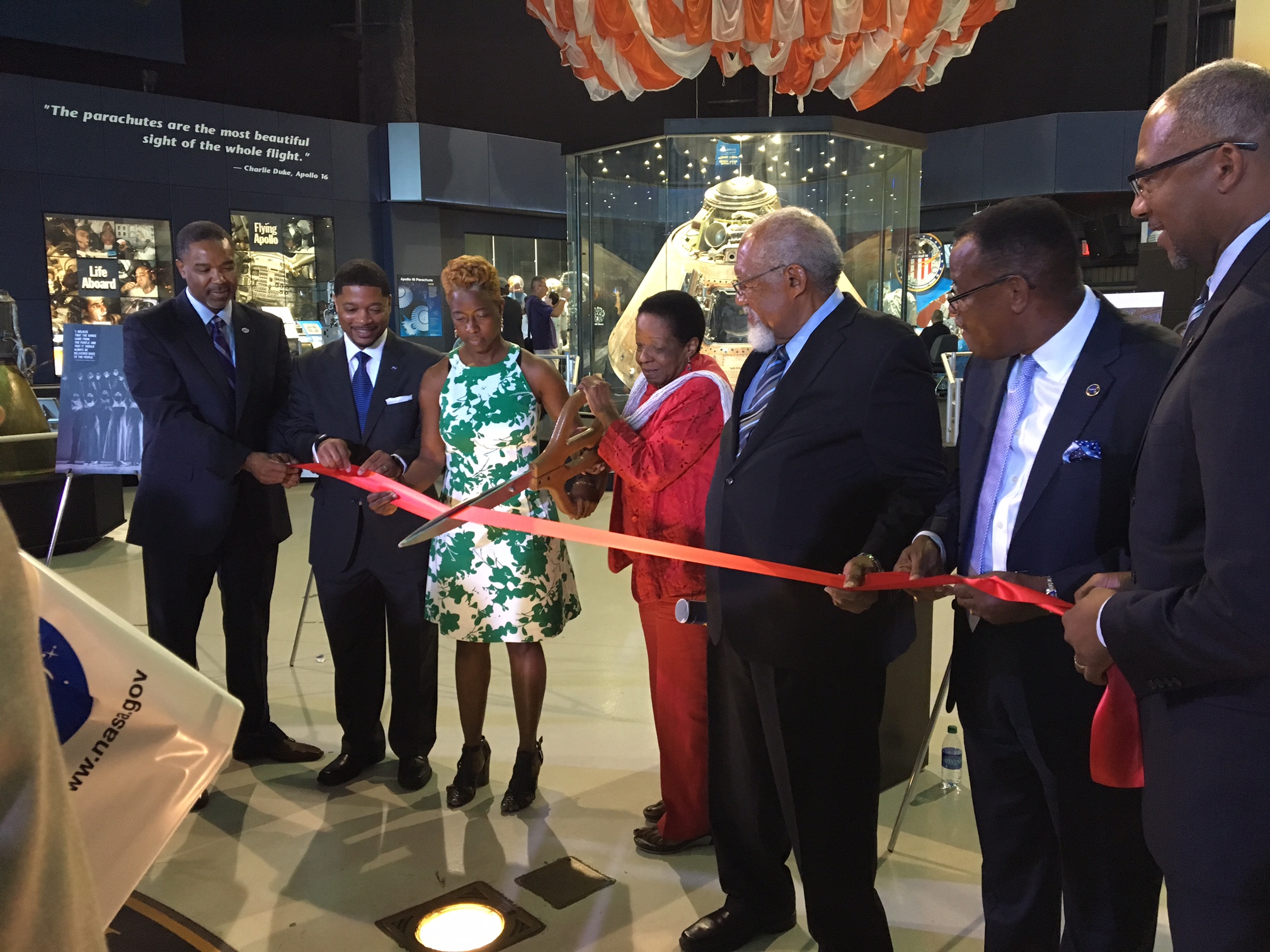
Alabama State Rep. Laura Hall, center, cuts a ceremonial ribbon at the U.S. Space & Rocket Center in Huntsville Sept. 24, celebrating the opening of the Smithsonian National Museum of African American History and Culture in Washington. She is joined by participants of the “African-American Voices from Marshall Space Flight Center” panel discussion held earlier in the day — from left, Gerald Vines, faculty associate for student achievement and director of the STEM Knowledge Center at the Alabama A&M University in Huntsville; Markeeva Morgan, manager of Space Launch System Core Stage Avionics Hardware at Marshall; Ruth Jones, a mishap investigation specialist at Marshall; Donald Frazier, retired deputy chief technologist at Marshall; Lewis Wooten, director of Marshall’s Mission Operations Laboratory; and Loucious Hires, director of Marshall’s Office of Diversity and Equal Opportunity. The panel talked about the opening of the national museum, offered their thoughts on science, technology, engineering and mathematics education in the African-American community and shared how they were inspired to pursue their careers. The Smithsonian National Museum of African American History and Culture opened Sept. 24. (NASA/MSFC/Brian Odom)
Marshall-Developed Software Improves Space Weather Forecasts
By Brian C. Massey
Radiation released during large-scale weather events on the sun can pose health risks to astronauts in space. Radiation, at its most basic, is simply waves or sub-atomic particles that transport energy to another entity.
Energetic particles can be dangerous to humans as they pass through skin, depositing energy and causing damage to cells or DNA along the way. This damage can mean an increased risk for cancer later in life — or, at its worst, acute radiation sickness during the mission if the dose of energetic particles is large enough.
In an effort to protect astronauts and resources on Earth, scientists at NASA’s Marshall Space Flight Center, working with NASA’s Space Radiation Analysis Group at Johnson Space Center, developed an innovative new software, known as MAG4. Short for Magnetogram Forecast, MAG4, uses a magnetogram, or magnetic map of the sun, and real-time solar-surface magnetic data from NASA’s Solar Dynamics Observatory to forecast the probability of the occurrence of solar flares and coronal mass ejections on the sun.
Very difficult to forecast, solar flares and coronal mass ejections also affect Earth’s climate, electric power transmission, GPS systems, high-frequency radio communications and satellite communications, making it important for researchers and scientists to be able to predict the probability of such events.
Solar flares — intense bursts of radiation coming from the release of magnetic energy associated with sunspots — can produce strong x-rays that degrade or block high-frequency radio waves used for radio communication. Particles released from solar flares block radio communications at high latitudes and penetrate satellite electronics, causing electrical failure.
Coronal mass ejections — violent, sudden release of gas and magnetic fields released form the sun’s outer atmosphere — can cause geomagnetic storms at Earth, inducing extra currents in the ground that can degrade power grid operations, and modifying signals from radio navigation systems causing reduced accuracy.
MAG4 assumes these events are more likely in solar regions with more free energy. Since free energy cannot be directly measured, MAG4 uses a proxy of the active region magnetic free energy, and forecasts an event rate based on this proxy. The team developed the software’s forecast curves using 40,000 magentograms from 1,300 active solar regions observed over almost a full solar cycle of 13 years.
“MAG4 has proven to be highly reliable,” said Nasser Barghouty, manager of Marshall’s Astrophysics Office. “It effectively predicts the likelihood of large scale solar weather phenomena 24 to 48 hours in advance.”
Barghouty and his teammates from the Center for Space Plasma and Aeronomic Research at the University of Alabama in Huntsville — David Falconer, Igor Khazanov and Ron Moore — developed MAG4 to be the first software in its class to be fully automated. The software performs data acquisition and processing and outputs probability measures in pseudo real time.
“With its ability to provide proven, probabilistic, data-based forecasts, unmatched by any other forecasting model, MAG4 can save lives and protect resources on Earth,” said Barghouty.
Celebrating the software’s innovation, MAG4 was named Marshall’s 2016 Software of the Year and received an honorable mention in NASA’s Software of the Year completion.
The Software of the Year awards, which are sponsored by the Offices of the Chief Engineer, Safety and Mission Assurance and the Chief Information Officer, are designed to give recognition to developers of exceptional software created for or by NASA and owned by NASA. Excellence in software is vital to the agency’s leadership role in developing aeronautics and space technologies. The competition recognizes software that is creative, usable, transferable, and possesses inherent quality.
Massey, an ASRC Federal/Analytical Services employee and the Marshall Star editor, supports the Office of Strategic Analysis & Communications.
Faster Than a Flying Space Station: 150 Compete in 2016 Racin’ the Station Duathlon
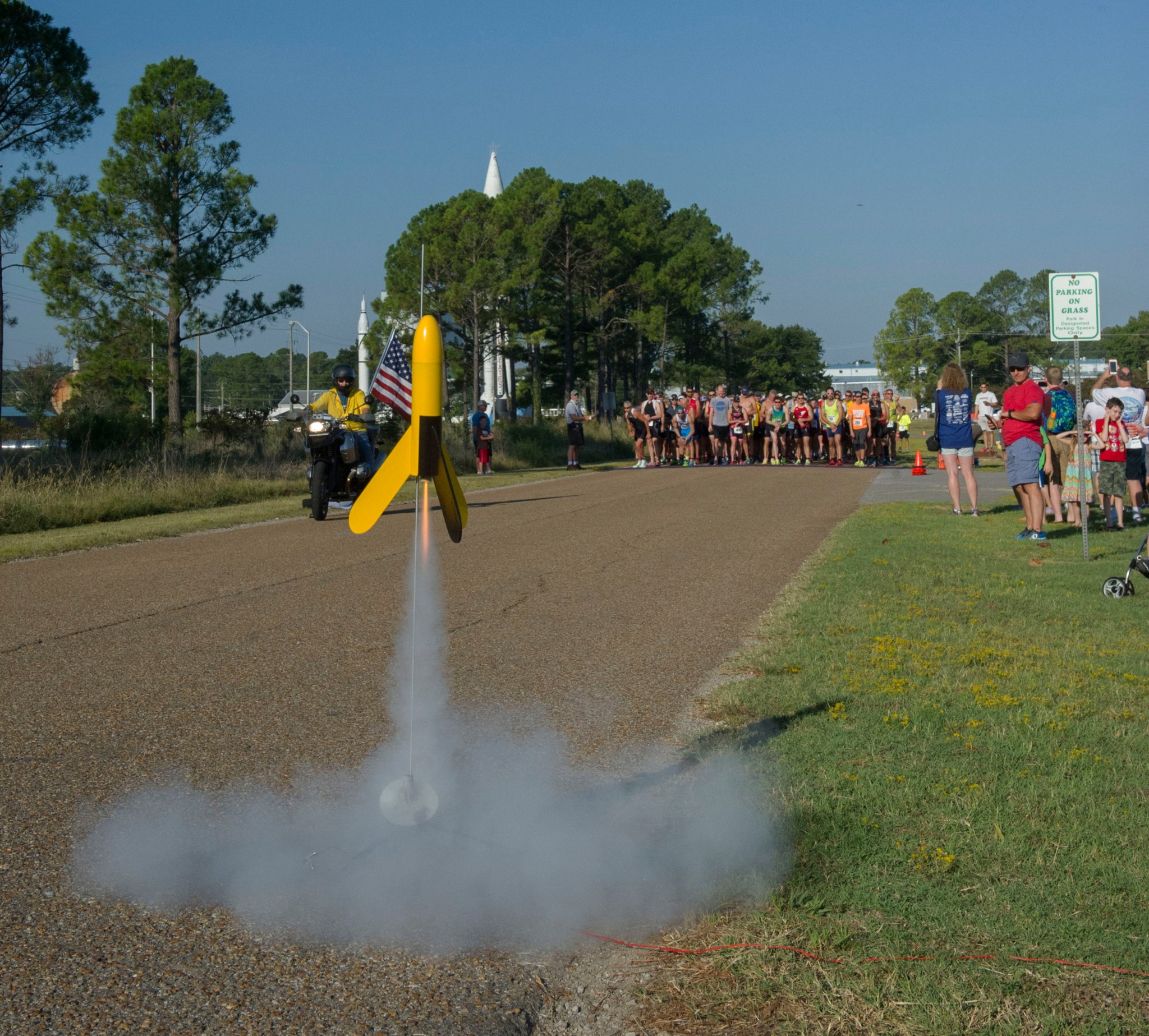
A model rocket launch acts as the “starting pistol” for the 2016 Racin’ the Station duathlon at NASA’s Marshall Space Flight Center on Sept. 24. Participants were invited to run and bicycle a custom course — a 3.14 kilometer run, followed by a 23 kilometer bicycle ride, and another 3.14 kilometer run — in the same amount of time it takes the International Space Station to complete one orbit of Earth — just over 90 minutes. (NASA/MSFC/Emmett Given)
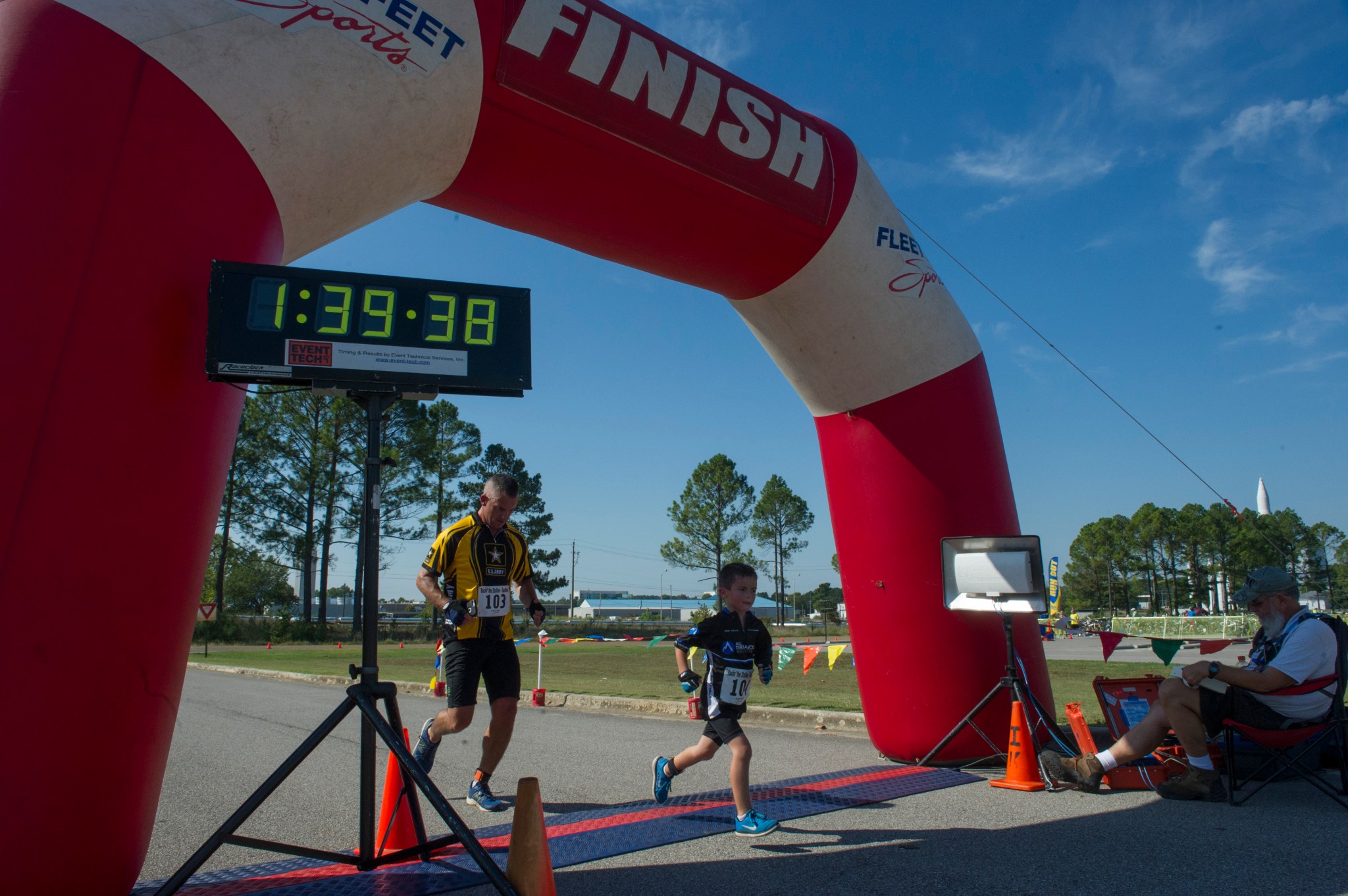
Six-year-old Charlie Westrip crosses the finish line just ahead of his father, Charles, in the Racin’ the Station duathlon Sept. 24. Of the 150 racers who started, 98 completed the course faster than the station could complete one circuit of Earth. While Charlie didn’t beat the station, he still earned a medal for finishing first in his age group. (NASA/MSFC/Emmett Given)
This Week in NASA History: Second Crewed Skylab Mission Returns to Earth — Sept. 25, 1973
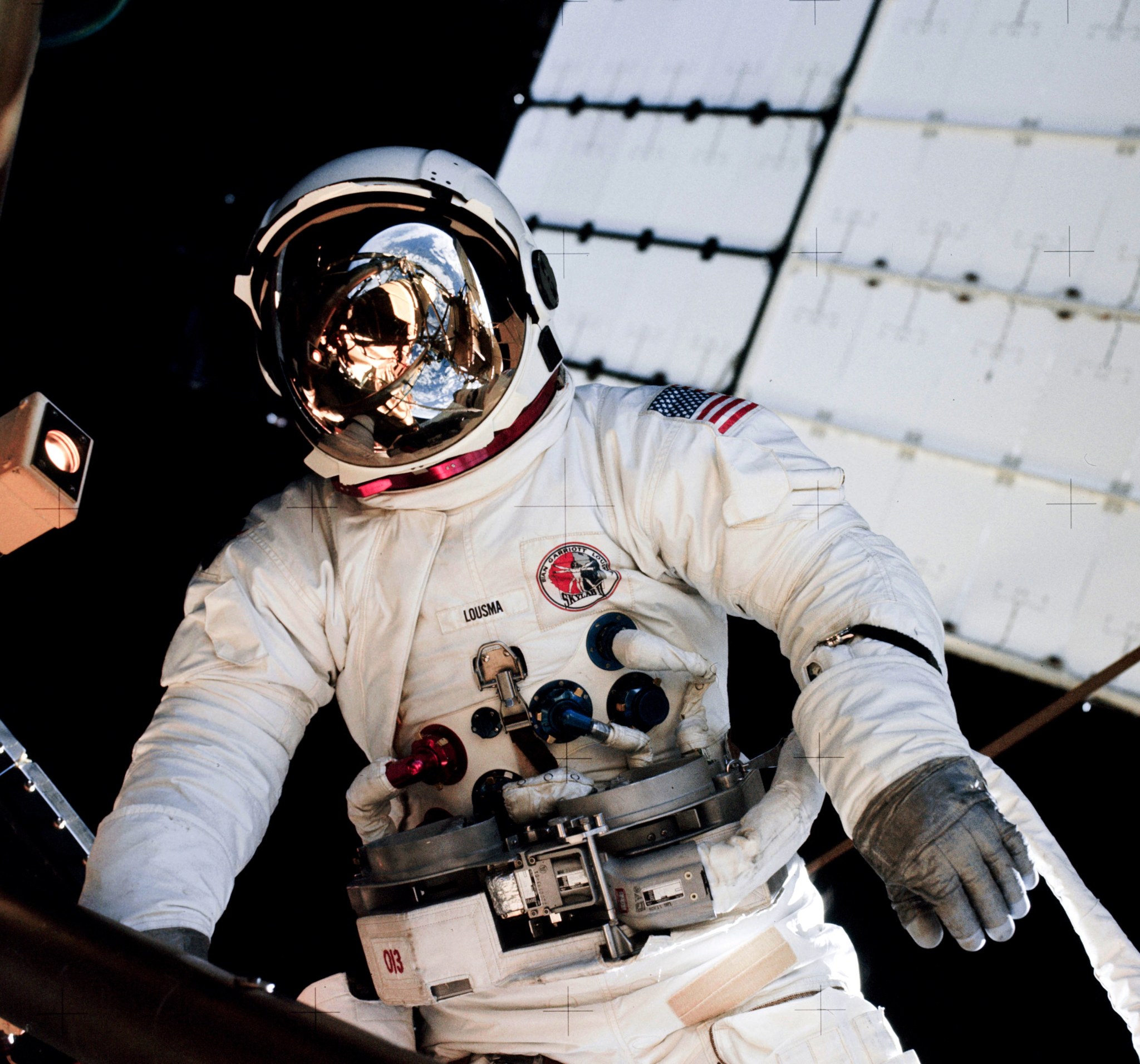
Credit: NASA/JPL-Caltech
This week in 1973, the second crewed Skylab crew splashes down in the Pacific Ocean, after a successful 59-day mission. Here, astronaut Jack R. Lousma participates in extravehicular activity during which he and astronaut Owen K. Garriott deployed a twin pole solar shield, developed by NASA’s Marshall Space Flight Center. The shield was needed after the original panel to protect the orbital workshop was ripped off during launch in May 1973. The solution was delivered to the space station just over two months after the first launch, with much of the development and testing performed at Marshall. In addition to solving the solar shield issue, Marshall provided the Saturn launch vehicles for the four Skylab missions and directed many of the station’s experiments. Today the Payload Operations Integration Center at Marshall serves as “science central” for the International Space Station, working 24/7, 365 days a year in support of scientific experiments on the orbiting laboratory. The NASA History Program is responsible for generating, disseminating and preserving NASA’s remarkable history and providing a comprehensive understanding of the institutional, cultural, social, political, economic, technological and scientific aspects of NASA’s activities in aeronautics and space. For more pictures like this one and to connect to NASA’s history, visit the History Program’s webpage. (NASA)

